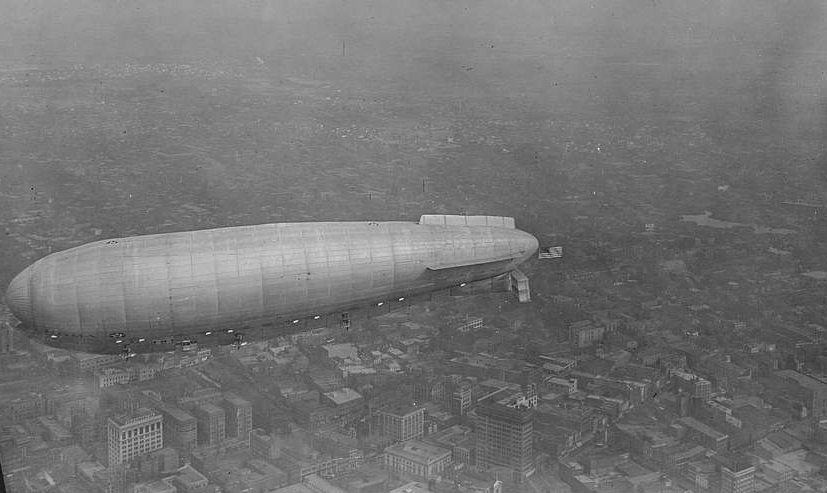
the Roma dirigible over Norfolk in 1921
Source: Picryl, Italian Airship "Roma" Over Norfolk Virginia

the Roma dirigible over Norfolk in 1921
Source: Picryl, Italian Airship "Roma" Over Norfolk Virginia
The Air Service became a separate military organization in World War I, no longer part of the Signal Corps. While stationed in Europe during World War I, the Air Service flew balloons but had no dirigibles.
By definition, lighter-than-air balloons are pushed by wind currents while dirigibles are driven by motors. A dirigible without a rigid or semi-rigid frame os called a blimp.
In 1919, Langley Field was the home of the United States Army School of Aerial Photographic Reconnaissance. The Air Service stationed two blimps manufactured in America, plus one from England and one from France, there.1
In 1920, Brigadier General William Mitchell used a blimp originally manufactured in France in an exercise to evaluate the role of aircraft in coastal defense. The Zodiac blimp was used to identify ships approaching the entrance to the Chesapeake Bay, after which aircraft were dispatched to attack the ships. Later, Mitchell became famous for his demonstrations of how aircraft could sink warships.2
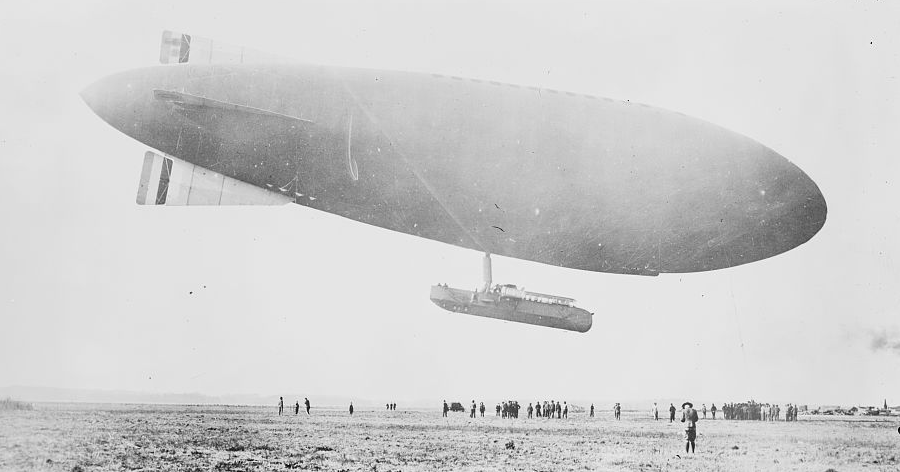
the Zodiac blimp was used in a coastal defense exercise based at Langley Field to demonstrate how aircraft could intercept a hostile navy
Source: Library of Congress, Zodiac
The US Army had purchased the largest semi-rigid dirigible in the world, the Roma, from the Italian government in 1921. The military had planned to purchase the ZR-2 dirigible in England, but that airship had crashed six months earlier.
Though the Roma was designed to fly across the Atlantic Ocean, it was still an experimental craft to the US military. It was packed on a ship for the crossing to Langley Field, now Joint Base Langley-Eustis.
The military quickly determined that new engines were required to power the Roma. The test flight on February 21, 1922 to evaluate the engines was intended to go from Langley Field to Naval Air Station Norfolk. Instead, it ended in disaster when hydrogen leaked and then the box rudder became dislodged.
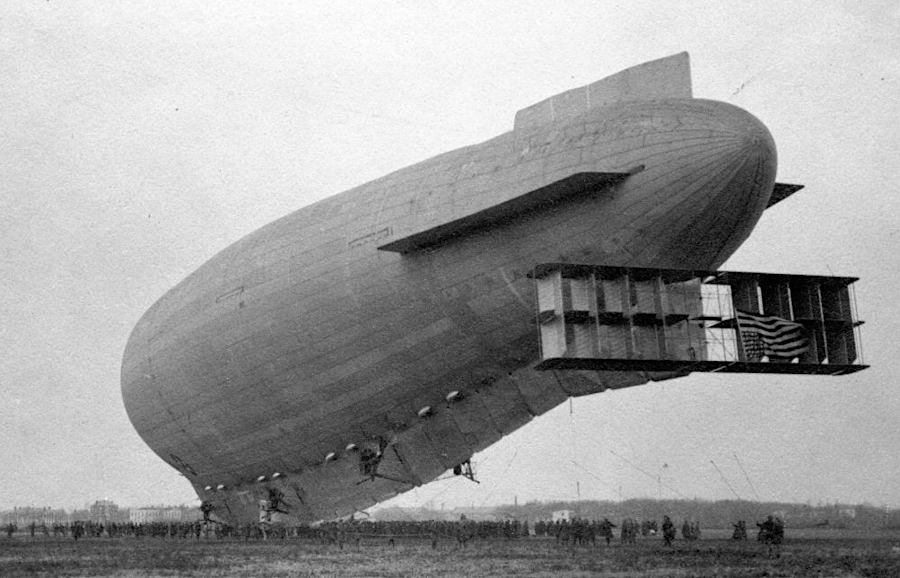
the Roma dirigible crashed and burned after its box rudder came loose
Source: Picryl, Roma Airship
The crew stopped the motors as the Roma tilted down. When it touched an 2,200 volt electricity wire strung above the ground, the hydrogen exploded and 34 of the 45 passengers were killed. Future dirigibles were tested, but only using helium instead of hydrogen.3
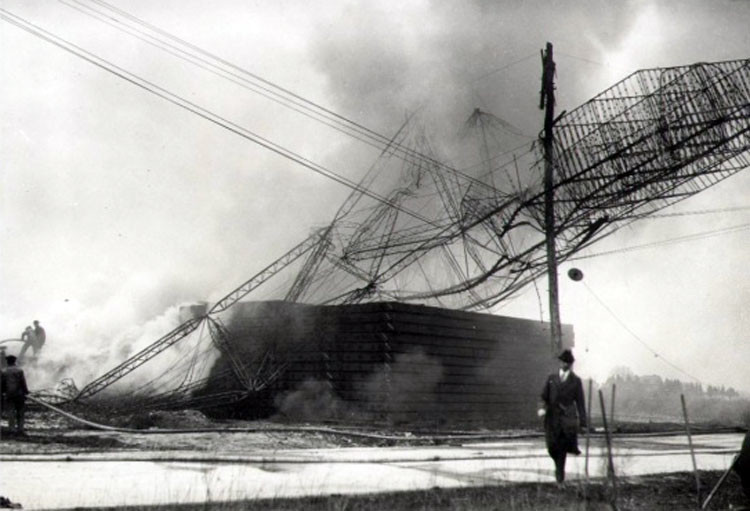
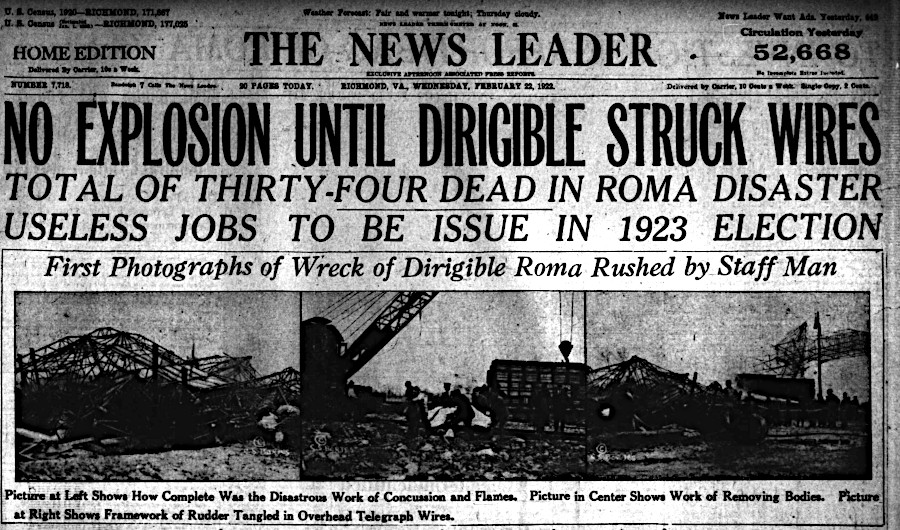
the Roma lost control, hit electricity wires, and burned
Source: Norfolk Public Library (via Wikipedia), Virginia Pilot and Virginia Chronicle, News Leader (February 22, 1922)
The first "zeppelin" built in the United States was initially labeled ZR-1, then christened as the Shenandoah. The dirigible was one of four airships commissioned by the US Navy. The 680-foot long airship was the first to be filled with helium rather than hydrogen; oil fields in Texas were then the largest source of helium in the world. The rigid framework was covered with a "skin" of canvas that covered 20 separate gasbags. Releasing helium and ballast enabled the crew to increase or lower the height above ground. Five 300 horsepower motors enabled the ship to overcome air currents.
The Shenandoah was stationed at Lakehurst Naval Air Station in New Jersey after it started in service in October 1923. The USS Patoka was modified at the Norfolk Naval Shipyard in 2024 to add a 125-foot tall mooring mast. That would enable the ship to support the Shenandoah and its sister dirigible, the Los Angeles, while they made flights over the ocean. Because helium was scarce, the gasbag capacity on the airships was constrained. Resupply of helium from the USS Patoka would extend the range.
Plans were made to fly the Shenandoah north and explore the unknown Arctic. Not until 1926 did Commander Richard Byrd fly from Spitzbergen, Norway to the North Pole, or at least claim to have overflown the top of the world.4
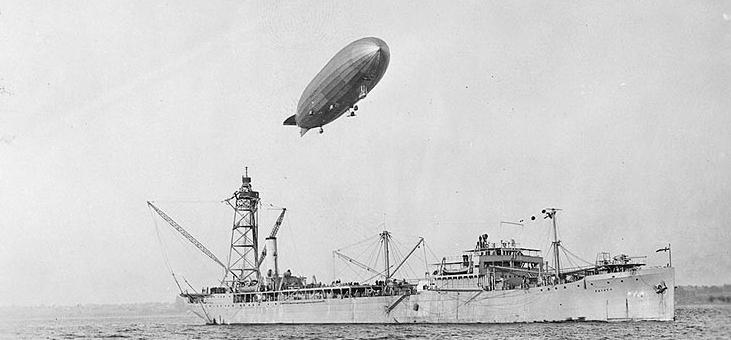
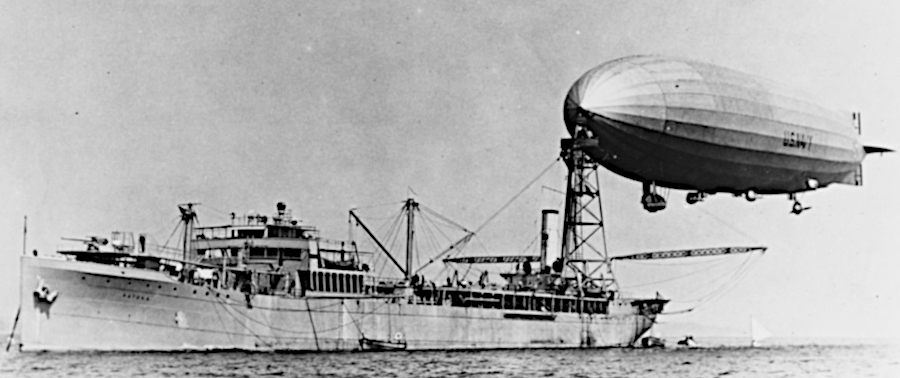
the USS Patoka had a mooring mast to support airships traveling over the ocean
Source: Naval History and Heritage Command, NH 98162 USS Patoka (AO-9) and NH 57994 USS Shenandoah (ZR-1)
In 1924 the airship flew from New Jersey to Tacoma, Washington and returned in 19 days, completing the first transcontinental flight by a rigid airship. 1925 the US Navy sent the Shenandoah west from Lakehurst on an 11-state promotional tour. The airship, advertised as the "Empress of the Clouds," was expected to revive enthusiasm for the military after the recent World War.
On September 3, on its 57th flight, the Shenandoah encountered storms over eastern Ohio. As the captain wrote "wind increasing in volume, get chance to...," strong winds forced the airship up, then down, and finally broke it in half. The control car broke loose and crashed to the ground, killing the captain and several crew members. Others fell from elsewhere on the ship and also died. The bow and stern sections, held aloft by gasbags, eventually sank to the ground six miles apart.
Of the 43 people on board, 29 survived in the bow and stern sections. One survivor, Walter Johnson, was too injured to stay in the US Navy. He became a lawyer in Northumberland County, and in 1949 ran for governor of Virginia as a Republican. He gathered just 27% of the vote. Since then, every Republican running for governor has done better.
The disaster led to a redesign of airships. Frames were strengthened, the horsepower of the motors increased, and the control car was attached directly to the frame rather than suspended underneath the canvas-covered frame. The pencil-thin design was modified to create a different shape of the hull, most capable of withstanding bending stresses.5
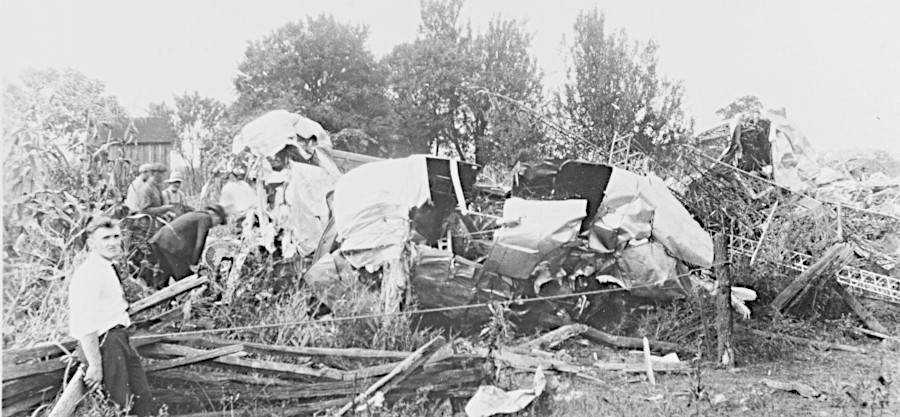
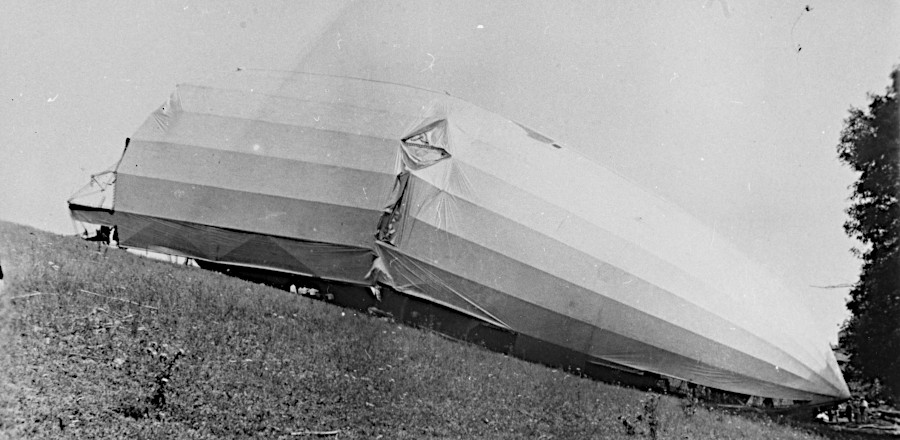
the Shenandoah crashed in Ohio, killing 14 of the 43 passengers on the airrship
Source: Naval History and Heritage Command, NH 42037 Crash of USS Shenandoah (ZR-1), 3 September 1925 and NH 42044 Crash of USS Shenandoah (ZR-1), 3 September 1925
The US Navy ended Lighter-Than-Air (LTA) operations in 1962, but restarted in 2011 with one experimental airship to test Command, Control, Communications, Computers, Intelligence, Surveillance and Reconnaissance (C4ISR) concepts. In 2013 the US Navy used that one manned blimp, the MZ-3A, to test avionics systems over Northern Virginia:6

the US Navy briefly operated a blimp between 2011-2014, with one flight over Northern Virginia
Source: US Department of Defense, 130403-N-IC228-012
The US Navy cancelled the MZ-3A program in 2014 and sold the blimp in 2017. The Department of Defense has no blimps with humans aboard now.7
Modern blimps carry human pilots and passengers are used for advertising, with the Goodyear blimp being the most famous. No blimps are based in Virginia now. The Goodyear blimp occasionally flies across the state, but its bases are in Ohio, California, and Florida.8

the Goodyear blimp has bases in Ohio, California, and Florida
Source: Goodyear, Visit an Airship Base